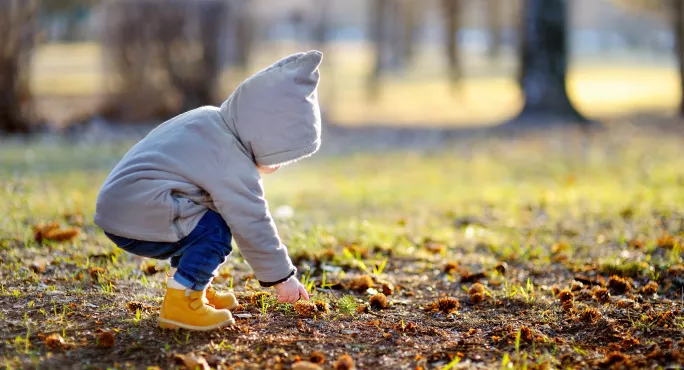- Home
- Nurseries to open today - but only if ‘fully outdoors’
Nurseries to open today - but only if ‘fully outdoors’

Nurseries in Scotland could in theory open today as the slow process of easing the coronavirus lockdown continues - but only if they are “fully outdoors”.
Concerns have been raised that few nurseries will be able to open in practice, even as outdoor settings, after Scottish government guidance - published on Monday evening - stressed that children should be restricted to groups of eight.
It emerged this morning that even the country’s established outdoor nurseries were struggling to open.
Coronavirus: How outdoor learning can help with social distancing
Early years: How to support young children out of lockdown
Background: Outdoor play officially ‘fundamental’ to learning
Speaking on BBC Radio Scotland this morning, Kenny Forsyth, chief executive of Stramash, the largest outdoor nursery provider in Scotland, said that allowing outdoor nurseries to open in Phase 1 of easing lockdown was a “great show of faith” in the country’s approximately 30 outdoor nurseries. He added that “we couldn’t be more delighted about that”.
Coronavirus: Nurseries call for financial guidance
However, Stramash could not open its four nurseries today because, while Mr Forsyth said the guidance for nurseries was “absolutely correct” in prioritising public health, the practical impact was far-reaching and “we have to work out with the government how it’s going to be paid for”.
Mr Forsyth said there would be financial problems for private nursery providers such as Stramash if children were only able to attend for around half the time they do usually; he said it appeared likely that nurseries would be “half-empty”.
He added that Stramash nurseries, which have been operating as hubs since March, appreciated guidance but that it focused on care. Now, he said, nurseries need financial guidance.
Upstart Scotland, a group that campaigns for a higher school starting age, has also raised concerns about the new guidance for outdoor nurseries, which it said was “causing alarm” and was “not financially viable” for small nurseries.
In response, one woman who runs outdoor nurseries in Scotland said: “We’re currently working with the government on how we can ensure safety and quality whilst also be sustainable as a business.” She added: “We have had a very productive day today, met as a sector and working positively with the government.”
Outdoor nurseries, which are also sometimes called forest nurseries or kindergartens, have become more common in recent years, and place children outdoors all the time, except in extreme weather conditions.
According to current Care Inspectorate registrations, as of May 2020, there are 26 registered fully outdoor nurseries and one fully outdoor out-of-school care setting in Scotland.
The new guidance states that nurseries “should establish cohorts of children who will remain together throughout each day [which] should consist of up to eight children who should remain with the same staff member(s) where practicable throughout the day”. It adds that “this may include a ‘floating’ staff member(s) who provide additional cover for a number of groups”.
Each group of up to eight children should remain more than 2 metres away from other groups of children, with “minimal sharing of equipment or resources”.
The guidance adds: “Time spent indoors (during meet-up or drop-off) should be kept to an absolute minimum in order to reduce risk of spread of infection. During any time the service has to use their emergency shelter (in the case of extreme weather conditions), additional consideration should be given to physical distancing between cohorts of children.”
Nurseries should also “ensure that they have adequate toilet facilities and handwashing/hygiene provision within their outdoor space”, and “children should maintain distance in toilet and handwashing areas where possible”.
The guidance notes that the Strategic Framework for Reopening Schools and ELC (Early Learning Centres) advises that it is “not appropriate for young children to maintain the models of physical distancing that would be suitable for older children, either practically or in terms of child development”, so alternative approaches, like those already established in Denmark and Norway, should be taken.
Nurseries are also advised to “limit exchange of take-home resources or items brought into the outdoor setting”.
The guidance states: “Where equipment or resources are being used - eg, tables, hammocks, books - settings should ensure that multiple groups do not use it simultaneously, as well as considering appropriate cleaning between groups of children using it.”
Keep reading for just £1 per month
You've reached your limit of free articles this month. Subscribe for £1 per month for three months and get:
- Unlimited access to all Tes magazine content
- Exclusive subscriber-only stories
- Award-winning email newsletters



